The housing market surge is somewhat surprising considering that the unemployment rate has risen from 4.0% to 5.3%, consumer confidence was weak most of the year, many businesses have closed, foreign tourists are no longer occupying Airbnb-type properties, and banks have cut back mortgage funding to groups such as the self-employed and people working in the most heavily affected sectors.
But housing has been propelled higher by some exceedingly strong factors, led by falls in mortgage rates to record lows. The two-year fixed mortgage rate currently sits near 2.5% from 4.3% two years ago. Banks are also offering one-year fixed rates at 2.29%. Attracted by low borrowing costs many people have decided to jump into the housing market.
But it is not just lower mortgage interest rates in play. Term deposit rates have fallen to roughly 0.8% for most terms. The average two-year term deposit rate has fallen about 2.5% over the past two years. This is greater than the fall in the same term mortgage rate and depositors are now seeing their money shrink in value after allowing for tax and then inflation.
The opportunity cost of placing funds in an asset like property has plunged and so money has moved into the sector. But we have also seen people flocking to residential property because of the removal of Loan to Value Ratio regulations – LVRs.
Initially this was because they were removed. But since maybe October last year it has been because of an expectation that they would be coming back very soon. People have been buying property before the likes of the investor minimum deposit requirement goes to 30% and perhaps even 40% come March 1.
There has also been property buying because of the inability to travel overseas, use of money saved up during the seven weeks of lockdown, the stronger than expected economy and return of jobs growth with labour shortages, and a few other important factors.
One of these other factors is an expectation that when the borders fully reopen, many of the one million Kiwi residents overseas will look to come home. Few will, but the expectation that they might is encouraging people to buy property sooner rather than later.
The expectation of a boost to our economy from the eventual return of tourists and reversion of some rental accommodation to servicing tourists will also have been driving the desire to buy property.
How will this end? In the first 2-4 months of this year the frenzy is likely to continue. In fact, from my monthly Mortgage Advisors Survey we already know that there has been a return of both investors and first home buyers after they took a break over the Christmas-New Year period. But come March 1 and the likely return of 30%, or more likely a 40% minimum deposit requirement for investors, a good number of buyers are likely to step back.
Some new sellers are also likely to emerge. These will include skilled investors choosing to offload some less desirable properties to eager buyers, some taking profits, and some simply cashing up to seek whatever the new strongly rising market might be.
We will slowly see some current unrealistic vendors realise they are not going to sell for 40% above RV, and they will capitulate in their price demands. This meeting of the market will be good for turnover, but it will also be an interesting development when we consider the following.
It may be that at the end of December the number of properties listed for sale around the country was 26% lower than a year earlier and 73% down from the December 2010 total. But during December the number of new listings received by real estate agents was 23% ahead of the number for December 2019.
There are more people willing to sell and it won’t take too much of an easing off of the frenzied, panicking buyers, for the pace of price growth to appreciably slowdown.
Will prices fall at some stage this year? That is very unlikely given the improving state of the economy – assisted by high strength in house construction – and an expectation that interest rates will remain low for a long time.
This low interest rate expectations scenario has been engineered by central banks around the world determined to drive their economies upward on the back of higher debt to the greatest extent possible. Many central banks have stated that even when the outlook for inflation goes up, they will hold off raising their main overnight interest rate until either inflation actually comes in above 2%, or it has sat above 2% for some unspecified period of time.
Expectations of sustained low interest rates along with an improving economy and eventual opening of the borders all suggest that prices will continue to rise this year – but at a slowing pace once we get beyond the March quarter.
With regard to the economy itself, we can anticipate support not just from low interest rates and growing construction of houses, but slowly rising infrastructure spending and businesses restarting capital spending plans which were shelved when Covid-19 came along. Businesses will be looking to focus on investing in labour-saving technologies, logistics facilities because more people are shopping online, more efficient premises, better data systems, and so on.
There is also going to be support for growth from the improving world economy and the eventual return of people overseas to eating out, which will be good for our primary sector exports including dairy products and wine.
The return of tourists will be a net positive for the economy – but it is best to assume that does not happen until early in 2022 rather than getting optimistic about a date well before the end of this year. The rollout of vaccination programmes around the world looks like being somewhat problematic and this could delay border reopening in many countries.
There will be some restraint on growth from the Kiwi dollar rising further. Our economic story is a good one, as is our ranking of number 1 for handling Covid-19 according to the Lowy Institute in Australia in January. The high probability that our central bank will tighten monetary policy before other central banks will also slowly place some upward pressure on the NZ dollar as the coming year advances, and this will take some of the strength out of rising export earnings including from the recent strength in dairy prices.
Businesses are likely to rapidly find themselves in positions where ability to grow will again be compromised by shortages of labour. Some are already restraining their acceptance of customer orders because of concerns about the global disruption to supply chains and the risks that necessary products do not show up in time.
There is also the issue relevant to the strong demand for new houses of blockages in the pipeline of developable land. Councils around the country have been caught out by the speed with which people have turned from trying to buy an existing house to contacting building companies to get one built. Those companies have bought up land very quickly and the pressure is now on to get the necessary infrastructure in place.
Covid-19 was the big challenge for 2020. This year we know it exists and we know which sectors are most negatively, and most positively, affected. This year the challenges for businesses will shift back to where they were over 2018-19, and for investors the challenge will be finding yield in an environment where some asset prices seem absurdly high – but we cannot know whether they will correct back the other way or not.
Email me at [email protected] to subscribe to my free weekly “Tony’s View” for easy to understand discussion of wider developments in the NZ economy, plus more on housing markets.
By Tony Alexander



